Showing 217–228 of 301 results

The book makes it explicit on how certain important philosophical questions generated from logic are, in the ultimate analysis, rooted in the area of philosophy of language. It also suggests certain means of settling these issues of philosophy of logic.
Philosophy of logic and philosophy of language are closely interrelated areas of research. Many of the philosophical questions arising from logic cannot be fully addressed without taking into consideration certain issues associated with the concerned language. The philosophical issues, e.g. concerning validity of an argument, proof for the validity of an argument are philosophical problems, which are generated from the study of logic.
The book makes it explicit on how certain important philosophical questions generated from logic are, in the ultimate analysis, rooted in the area of philosophy of language. It also suggests certain means of settling these issues of philosophy of logic. In addition to certain issues in philosophy of logic the book extensively deals with certain issues in philosophy of language such as the issue concerning holism, semantic inferentialism, realism, objectivity of statements and representationalism.
Those who are engaged in advanced research in philosophy of language and philosophy of logic will benefit immensely from reading this book. It will also be of great use to the students of philosophy and to the general readers as well.
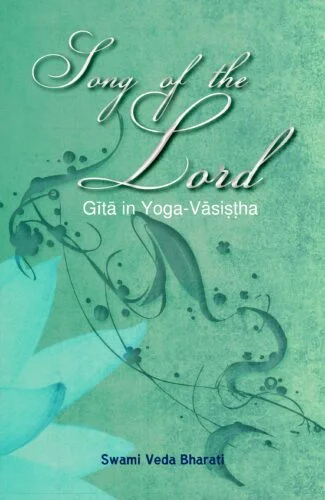
This volume encapsulates the advice of Krishna to Arjuna at the Mahabharata battlefield, through the poetic narration of Vedic seer Vasistha in Yoga-Vasistha, which is different from the traditional one found in Mahabharata. It melds together the wisdom of two great epics Bhagavad-Gita and Yoga-Vasistha providing unparalleled access to the great truths and insights of yoga and liberation.
Arjunas predicament of fighting and killing his own kinsmen and gurus in the Mahabharata War, and Lord Krishnas advice and thus the formers enlightenment are well known. Moving away from the traditional Mahabharata narration, Yoga-Vasishtha presents a different narrative approach by the Vedic seer, Vasishtha about the KrishnaArjuna dialogue to his pupil Rama as if it would happen eventually in the remote future.
While the Bhagavad-Gita accounts for Krishnas teaching of eighteen forms of yoga in 700 verses, Vasishtha narrates sixty stories in more than 28,000 verses, making Yoga-Vasishtha as one of the lengthier and most lyrical philosophical discourses in the world. In the course of the narrative, Vasishtha summarizes how to attain liberation, the essence of the Bhagavad-Gita, in seven chapters.
This lucid translation of Mokshopaya, a section of the Yoga-Vasishtha, encapsulates the message of Krishna, through the poetic narration of Vasishtha. Arjuna experiences the dissolution of his ignorance, overcomes his attachments and arrives at a point of freedom. The author, by choosing to highlight the story of Arjuna from two sources, has melded together the wisdom of two great epics Bhagavad-Gita and Yoga-Vasishtha providing the reader with unparalleled access to the great truths and insights of yoga and liberation.

This volume encapsulates the advice of Krishna to Arjuna at the Mahabharata battlefield, through the poetic narration of Vedic seer Vasistha in Yoga-Vasistha, which is different from the traditional one found in Mahabharata. It melds together the wisdom of two great epics Bhagavad-Gita and Yoga-Vasistha providing unparalleled access to the great truths and insights of yoga and liberation.
Arjunas predicament of fighting and killing his own kinsmen and gurus in the Mahabharata War, and Lord Krishnas advice and thus the formers enlightenment are well known. Moving away from the traditional Mahabharata narration, Yoga-Vasishtha presents a different narrative approach by the Vedic seer, Vasishtha about the KrishnaArjuna dialogue to his pupil Rama as if it would happen eventually in the remote future.
While the Bhagavad-Gita accounts for Krishnas teaching of eighteen forms of yoga in 700 verses, Vasishtha narrates sixty stories in more than 28,000 verses, making Yoga-Vasishtha as one of the lengthier and most lyrical philosophical discourses in the world. In the course of the narrative, Vasishtha summarizes how to attain liberation, the essence of the Bhagavad-Gita, in seven chapters.
This lucid translation of Mokshopaya, a section of the Yoga-Vasishtha, encapsulates the message of Krishna, through the poetic narration of Vasishtha. Arjuna experiences the dissolution of his ignorance, overcomes his attachments and arrives at a point of freedom. The author, by choosing to highlight the story of Arjuna from two sources, has melded together the wisdom of two great epics Bhagavad-Gita and Yoga-Vasishtha providing the reader with unparalleled access to the great truths and insights of yoga and liberation.

This collection of A.K. Coomaraswamy’s writings expounds the Indian theory of government based on textual sources such as the Brahmanas and the Rigveda. It vividly talks about the relationship between the spiritual and temporal power, paving the way for community welfare.
A literary work built up with parallel citations is apt to grow in the compass of the author himself, from his encyclopaedic scholarship. This revised edition of one of Coomaraswamy’s most significant writings is now being issued by incorporating his own additions to the printed first edition of 1942.
The Indian theory of government is expounded on the basis of the textual sources, mainly of the Brahmanas and the Rigveda. The mantra in the Aitareya Brahmana VIII.27, by which the priest addresses the king, spells out the relation between the spiritual and the temporal power. This ßmarriage formulaû has its analogous applications in the cosmic, political, family and individual spheres of operation, in each by the conjunction of complementary agencies.
The welfare of the community in each case depends upon a succession of obediences and loyalties; that of the subjects to the dual control of king and priest, that of the king to the priest, and that of all to the principle of an External Law (dharma) as king of kings. The king is such by Divine Right, but by no means, an absolute monarch. He may do only what is correct under the Law. Self-control is the sine qua non for the successful government of others; the primary victory is that of the Inner Man.
The application is to the king’, the man of action’ and artist’ in any domain whatever. There is nothing that can be truly and well done or made except by the man in whom the marriage of the Sacerdotium (brahma) and the Regnum (ksatra) has been consummated, nor can any peace be made except by those who have made their peace with themselves.
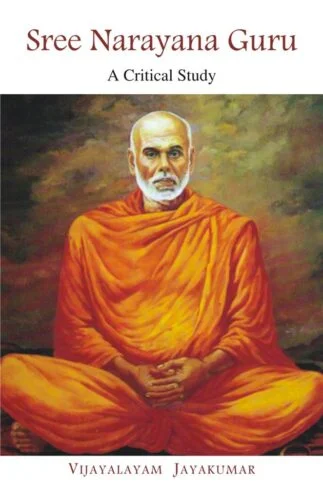
The book reconstructs the life of the legendary saint-reformer, Sree Narayana Guru and the entire scenario of his activity covering a century of Keralas history. It focuses on his life, historical background, socio-cultural milieu, spirituality, etc.
It is a holistic, at once compelling account of a saint-reformer of modern Kerala: Sree Narayana Guru (1856-1928). Veritably a versatile genius: a sage, philosopher, poet and social revolutionary, all rolled into one, Gurudeva was a perfect, though largely inscrutable, human being who, like Svami Ramakrishna Paramahamsa, created new tracts of his own in the realms of Indian philosophy. And invested temporal life, in any form, with an air of spirituality about him as is reflected, for instance, in his crusades against caste discriminations in Kerala or in his larger concerns with peace, universal brother-hood and co-existence. Dr. Jayakumars profile of this great guru focusses on his life, historical background, socio-cultural milieu, spirituality, philosophy, poetic genius, social reforms, humour, legacy and all else that one would possibly want to know about Sree Narayana Guru. Markedly different from the sofar-published studies on him, this book becomes the first ever to incorporate the English versions of Narayana Gurus verses: in both Malayalam and Sanskrit, together with their streamlined annota-tions and lucidly-written, insightful discussions. Which, in turn, also bring out Jayakumars remarkable critical acumen in highlighting the essential meaning, philosophical import and spiritual intensity of Gurudevas poetry. A work of epical grandeur, developed from years of the authors serious, persevered research, the book reconstructs not just the life-story of a legendary saint, but also the entire scenario of his activity covering over a century of Keralas social, spiritual and literary history.
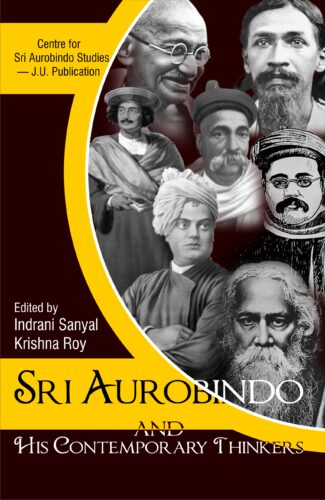
The book studies the contributions of some of the illustrious persons like Rammohan Roy, Gandhi, Tagore, Gokhale and Satish Chandra to the socio-cultural and spiritual life of late eighteenth to nineteenth century, and aims at situating Sri Aurobindo’s thoughts vis- -vis those of his contemporaries.
The period spanning the latter half of the eighteenth century and the nineteenth century in India was marked by a reawakened national spirit to reinterpret Indian traditional values in modern light. This book, comprising deliberations presented at a national seminar, discusses some of the illustrious persons of that period who by their ideas and actions enriched the socio-cultural and spiritual life of the period. Researchers study the period of Sri Aurobindo, his contributions as well as those of his contemporaries including Raja Rammohan Roy, Mahatma Gandhi, Tagore, Gokhale and Satish Chandra. The aim is to situate Sri Aurobindo’s thoughts in its socio-cultural background and study the contributions of his contemporaries to bring out the distinctiveness of Sri Aurobindo. The essays deal with Sri Aurobindo’s philosophy of nationalism, his view of Indian renaissance and Ireland’s national and cultural renaissance and his attitude towards national education. They take up interpretations of violence and non-violence by Sri Aurobindo and Mahatma Gandhi, Vivekananda’s outlook about morality, caste system and dharma, and response of Aurobindo, Tilak and Gokhale to Western imperialism. An interesting effort is made to compare the thoughts of Sri Aurobindo and Tagore towards the revolutionary movement and reveal Aurobindo’s perception of Tagore’s poetry. The book will be useful to historians, political and social thinkers, besides the general readers.
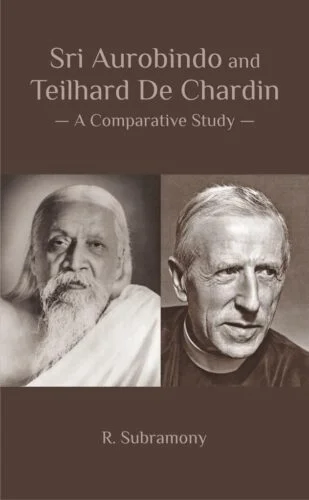
The book critically analyses many philosophical concerns of both Sri Aurobindo and Teilhard de Chardin and talks about the future evolution. It involves recognizing parallel features as well as differences in both the philosophers.
Sri Aurobindo and Teilhard de Chardin: A Comparative Study ventures into identify the progressive rungs in the ladder of human consciousness pointed out by both the thinkers, to see how they visualize going beyond to achieve Sachchidanda, the Supreme Bliss. The scrutiny involves recognizing parallel features as well as differences in both the philosophers.
Their writings are extremely significant in a phase where the future of humanity is at risk. Sri Aurobindo, who is steeped in the Vedic wisdom of the ancient India, calls up on us to shed our selfish nature and reach the higher levels of consciousness. Teilhard de Chardin, a Jesuit priest, exhorts us to unite and shed divisions. There is a striking similarity in their cosmologies. Sri Aurobindos concept of Supermind is the last stage in evolution and Teilhards Omega Point is the summit of evolution. Their process of evolution contains a triple transformation of consciousness. The book critically thus analyses many philosophical concerns of both Sri Aurobindo and de Chardin and talks about the future evolution.

In this biography, Sri Aurobindo’s life is presented comprehensively in all of its aspects. It also takes readers on a journey through Sri Aurobindo’s manifold literary creations, introducing them in accessible language to magnificent prose works such as The Life Divine, The Synthesis of Yoga or Essays on the Gita and the epic Savitri.
Sri Aurobindo is one of the most well-known Indian personalities of the twentieth century. He was a freedom fighter, a yogi and a poet; he developed what has become known worldwide as Integral Yoga. As a sage of great wisdom, he was twice nominated for the Nobel Prize.
In the present biography, his life is presented comprehensively in all of its aspects. The most important sources available today have been evaluated, among them his spiritual diary Record of Yoga, which was first published as a book in 2001. The author also takes readers on a journey through Sri Aurobindo’s manifold literary creations, introducing them in accessible language to magnificent prose works such as The Life Divine, The Synthesis of Yoga or Essays on the Gita and the epic Savitri.
This volume also portrays vividly the lesser known facet of Sri Aurobindo’s personality as a freedom fighter and his influence among the Hardliners, until his moving to Pondicherry.
Written as a living report with great insight and knowledge, this biography will be of great value to scholars, students and devotees interested in high-level integral studies. A careful documentation with numberless references facilitates further research into each respective subject. The large photo section contains many historical photos, as well as current images of the Sri Aurobindo Ashram and its surroundings.

In this biography, Sri Aurobindo’s life is presented comprehensively in all of its aspects. It also takes readers on a journey through Sri Aurobindo’s manifold literary creations, introducing them in accessible language to magnificent prose works such as The Life Divine, The Synthesis of Yoga or Essays on the Gita and the epic Savitri.
Sri Aurobindo is one of the most well-known Indian personalities of the twentieth century. He was a freedom fighter, a yogi and a poet; he developed what has become known worldwide as Integral Yoga. As a sage of great wisdom, he was twice nominated for the Nobel Prize.
In the present biography, his life is presented comprehensively in all of its aspects. The most important sources available today have been evaluated, among them his spiritual diary Record of Yoga, which was first published as a book in 2001. The author also takes readers on a journey through Sri Aurobindo’s manifold literary creations, introducing them in accessible language to magnificent prose works such as The Life Divine, The Synthesis of Yoga or Essays on the Gita and the epic Savitri.
This volume also portrays vividly the lesser known facet of Sri Aurobindo’s personality as a freedom fighter and his influence among the Hardliners, until his moving to Pondicherry.
Written as a living report with great insight and knowledge, this biography will be of great value to scholars, students and devotees interested in high-level integral studies. A careful documentation with numberless references facilitates further research into each respective subject. The large photo section contains many historical photos, as well as current images of the Sri Aurobindo Ashram and its surroundings.
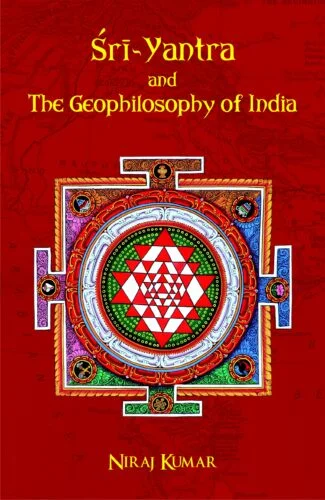
Sri-yantra, a mythical instrument, strikes a balance between the gross subtle and causal dimensions of the microcosmic and macrocosmic phenomena. It has made a strong footprint in the geophilosophy of India and beyond, and has a major stake in India’s landscape, code of Indian civilization, and is set to make a difference in various walks of Indian life.
The concept of geophilosophy, or to be more precise geo-metaphysics, is an enduring bond between the philosophical thought and its terrestrial support. Essentially the geographical positioning of a country influences its thinking and thus impacts its philosophy.
Sri-yantra, a mythical instrument, strikes a balance between the gross subtle and causal dimensions of the microcosmic and macrocosmic phenomena. It syncs with the esoteric ontology of the cosmos, the individual body, the state, the nation in its geographic aspect, all creative and conducive societal values, and the grand unification of existing dogmas, doctrines, creeds and commitments.
The author talks about his speculation of a triangular semblance of the Indian subcontinent and his intuitive experiences of ancient axioms of Eastern metaphysics. He elucidates that Sri-yantra, once esoteric, has become exoteric and can still retain its crown position in India. This book is a valuable accumulation of various facts, figures and values from myriad canons of mystic revelations. It also provides a type of interpolative vindication or justification of the two apparently conflicting ideologies of the oriental and occidental origins.
Sri-yantra has made a strong footprint in the geophilosophy of India and beyond, and has a major stake in India’s landscape, code of Indian civilization, and is set to make a difference in various walks of Indian life. This unusual volume sheds light on many a topic, which will interest readers of a wider spectrum.
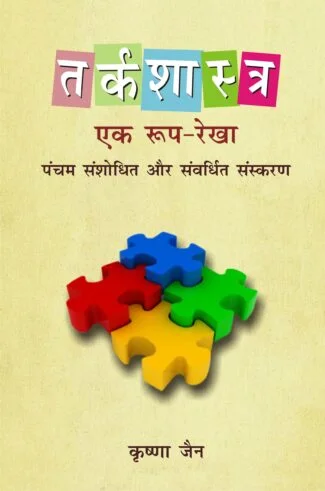
The present book is the fourth enlarged edition of the earlier book Tarkasastra Ek Roop Rekha. The current edition includes an additional chapter on Uses of Language and its Functions. Like the earlier book, the present book sets forth the principles and procedures of elementary Logic in the most simplified way and is specifically designed and intended for the use of undergraduate students. It contains almost all the main topics on Deductive, Inductive and Symbolic Logic prescribed in the syllabi of different universities in the country.
The present book is the fourth enlarged edition of the earlier book A Text Book of Logic-An Introduction. The current edition includes an additional chapter on Uses of Language and its Functions. Like the earlier book, the present book sets forth the principles and procedures of elementary Logic in the most simplified way and is specifically designed and intended for the use of undergraduate students. It contains almost all the main topics on Deductive, Inductive and Symbolic Logic prescribed in the syllabi of different universities in the country. The book attempts to present a clear perspective on Logic as a science of correct reasoning. In the introductory chapter the aim of Logic and the task of a Logician are elaborated. Other topics covered here are Terms, Propositions, Immediate Inference, Syllogism, Boolean Equations, Venn Diagrams, Anti-Logism Theorem, Truth Functions, Truth Table, Deductive Method, Predicate Calculus, Scientific Inductions, Causation, Mill’s Methods and Informal Fallacies to mention a few. All the topics are explained with the help of diagrams and lucid examples. Each chapter is followed by plenty of exercises for the benefit of students.
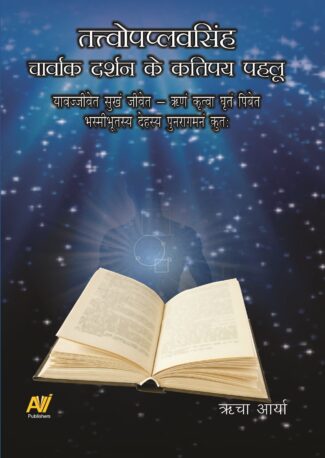
Jayarashibhatta’s Tattvopaplavsimha (ca. 8th cent.) is a work of the Charvak philosophy, which rejects evidence other than the direct evidence. The manuscript of Tattvopaplavisimha was obtained from Patan in 1926. The historical work examines ‘Evidence’ in the light of Indian philosophy. The present book reviews the refutation of various epistemological principles explained in Tattvopaplavsimha.
Jayarashibhatta’s Tattvopaplavsimha (ca. 8th cent.) is considered to be an important work of the Caravaka (Charvak) philosophy. The Charvak philosophy rejects evidence other than the direct evidence, to the extent that it does not consider sky as an element in the five fundamental elements (earth, water, fire, air and sky). The manuscript of Tattvopaplavisimha was obtained from Patan (modern-day Patna) in 1926. It was published in the Oriental Series in 1940 and with an introduction in Hindi by Pandit Sukhlal Sanghvi in 1987. The historical work examines the definitions of the evidence as accepted by various arms of Indian philosophy. The present book reviews the refutation of various epistemological principles explained in Tattvopaplavsimha.जयराशिभट्ट कृत तत्त्वोपप्लवसिंह (आठवीं शताब्दी) चार्वाक दर्शन का ग्रन्थ माना जाता है। चार्वाक दर्शन प्रत्यक्ष प्रमाण के अतिरिक्त सभी प्रमाणों को अस्वीकार करता है, इसके साथ ही प्रत्यक्ष को ही एकमात्र प्रमाण मानने के कारण चार्वाक पंचतत्वों (पृथ्वी, जल, अग्नि, वायु एवं आकाश) में आकाश तत्त्व को नकारता है। तत्त्वोपप्लवसिंह ग्रन्थ की पाण्डुलिपि सन 1926 में पाटन से प्राप्त हुई। सन 1940 में ओरियंटल सीरीज में तथा 1987 में पंडित श्री सुखलाल जी सांघवी की हिंदी भूमिका के साथ प्रकाशित हुआ। यह ग्रन्थ वैतण्डिक पद्धति होने के कारण भारतीय दर्शन के विभिन्न सम्प्रदायों द्वारा स्वीकृत प्रमाणों की परिभाषाओँ और प्रमाण की परीक्षा करता है। प्रस्तुत पुस्तक में तत्त्वोपप्लवसिंह में व्याख्यायित विभिन्न ज्ञानमीमांसीय सिद्धांतों के खंडन की समीक्षा की गयी है।
| There are no products |